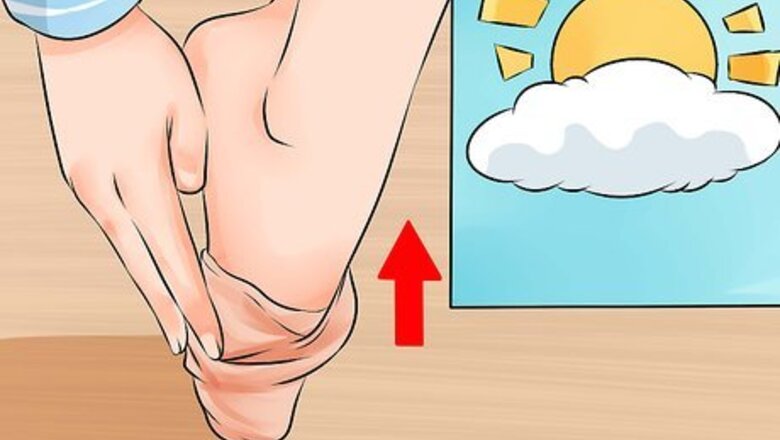
views
- Reach your hand inside the stocking and grab the toe. Then, pull the top part of the stocking down over your hand so it’s inside out.
- Sit down and slide your toes and heel into the stocking. Then, carefully pull the folded part of the stocking over your calf to turn it right side out.
- Wear latex or rubber gloves to help grip the stockings as you pull them on. Or, put the stockings on a sock aid if you have trouble reaching your feet.
Putting on Compression Stockings
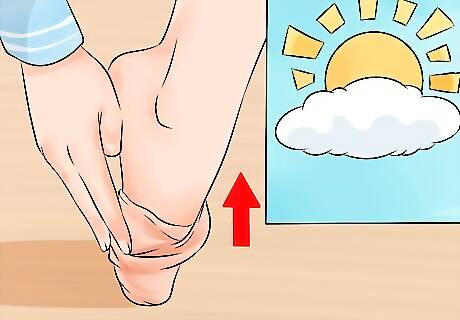
Wear compression stockings first thing in the morning. When you first wake up in the morning, your legs have been slightly elevated or at least horizontal. As a result, your legs are likely not as swollen as they might be later in the day. This will make it easier to put on compression stockings. Try elevating your legs while you sleep by resting your feet on a pillow. You can also slightly tilt the foot of your mattress upward by putting a 2x4 piece of wood underneath the mattress end.

Sprinkle talcum powder on your legs. If your legs have any moisture on them, you might not be able to pull up the compression stockings. Sprinkle talcum powder or cornstarch on your feet and calves to absorb any excess moisture.
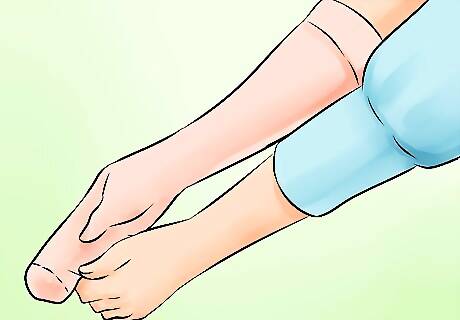
Put your hand into the stocking and grab the toe. One of the easiest ways to put on compression stockings is to turn the top part of the sock inside out. You’ll want to leave the toe of the sock right side out. Reach into the stocking and grip onto the toe.

Pull the top of the stocking down around your arm. Pinch the toe so that it stays right side out while pulling the top of the stocking down over your arm. This will result in the top being inside out.
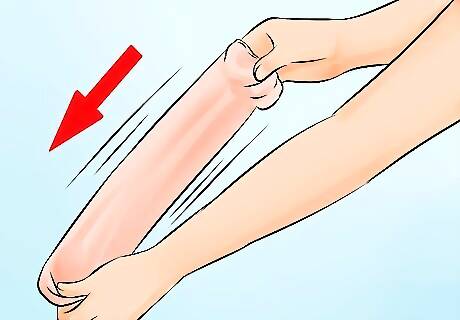
Pull the stocking off your arm. Carefully slide the stocking off your arm so that the top remains inside out while the toe is ready for your foot.
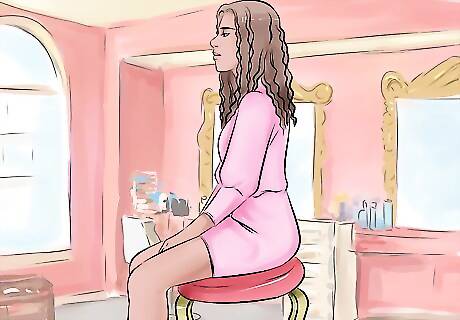
Sit on a chair or side of the bed. Putting on compression stockings can be difficult, especially if you have trouble reaching your feet. Try sitting down on a chair or on the side of the bed so that you can bend down to reach your feet.
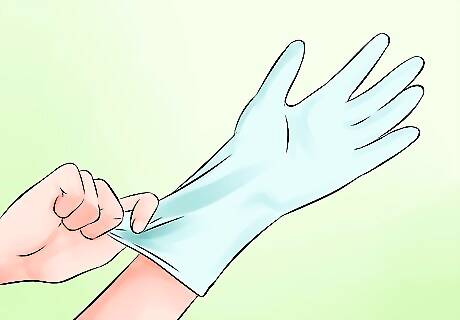
Wear latex or rubber gloves. Wearing gloves will make it easier to grip onto the stockings and pull them up. Choose latex gloves such as those worn by healthcare professionals, or similar type gloves. Dishwashing gloves will also work.

Put your toes into the sock. Slide your toes into the end of the sock and align the sock so that the toe of the sock is even and straight.

Bring the sock over your heel. As your toe holds the bottom of the sock in place, pull the bottom of your sock over your heel so that your entire foot is inside the sock.
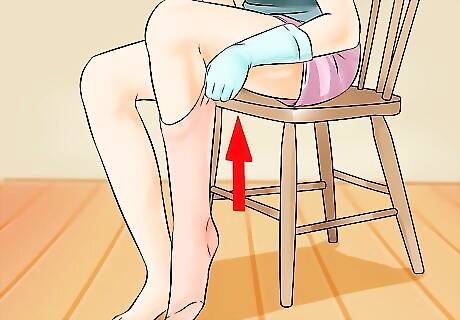
Slide the stocking up your leg. Use your palms to draw the stocking up and over your calf. The inside-out top part of the sock will roll upward to be right-side out. Your gloved hands will be able to grip the sock better than a bare hand. Do not pull at the top of the sock to get it up your leg. This will likely rip the sock.
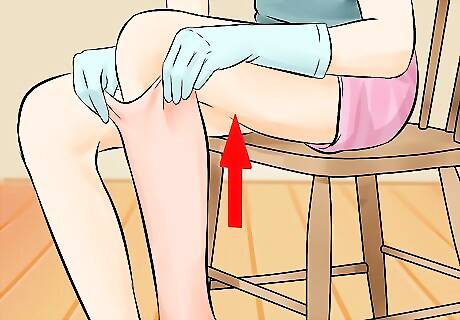
Adjust the sock as you draw it upward. Make sure to keep the sock straight and smooth while you bring it over your calf. Smooth out any wrinkles as you go. If you are wearing knee-high compression stockings, they should come up to a point 2 finger widths below your knee. Some compression stockings go up to the top of the thigh.
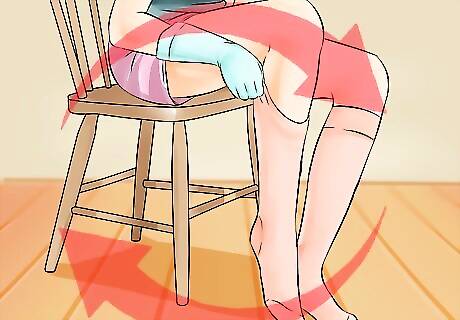
Repeat for the other leg. If your doctor has prescribed compression stockings for both legs, follow these instructions to put the sock on your other foot. Try to have the stockings come up to the same point on both legs. Some prescriptions may only require a compression stocking for one leg.

Wear compression stockings every day. If your doctor recommends that you wear compression stockings to improve blood flow, then it’s likely you’ll need to wear them every day. Otherwise, it can be difficult to get them on your feet. Take off your compression stockings when you go to bed every night.
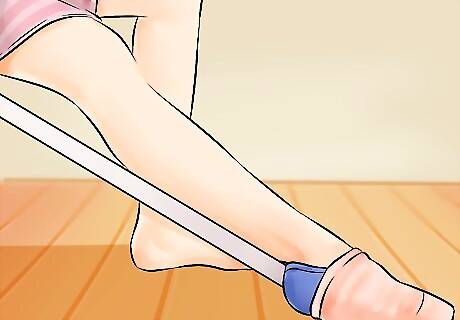
Use a sock aid. If you have trouble reaching your feet or putting on your compression stockings, you might benefit from using a sock aid. This is a device or frame that resembles a foot shape. Put the sock over the device and slide your foot into the device. Then remove the device and your sock will be properly placed on your foot.
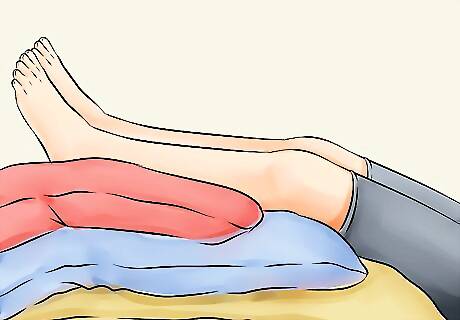
Elevate your feet. If you are having trouble putting on your compression stockings because your feet or legs are swollen, try elevating your feet above your heart for 10 minutes. Lie down on your bed with your feet resting on a pillow
Removing Compression Stockings
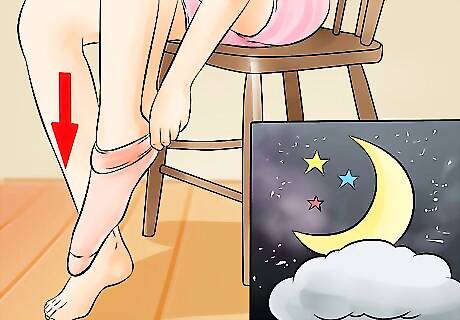
Take off compression stockings at night. Before you go to bed, remove your compression stockings. This will give your legs a rest and will also give you a chance to wash your stockings.

Pull down the top of the sock. Gently pull down at the top of the sock with two hands. This will pull the sock down your calf so that the sock is inside out again. Remove the stocking from your foot.
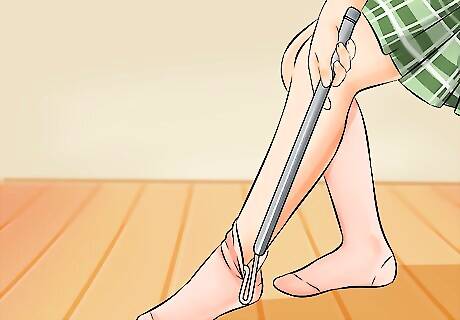
Use a medical dressing stick to remove the stockings. If you are having trouble getting the stockings off your ankles or feet, especially if you can’t reach your feet very well, try using a medical dressing stick to grip onto the compression sock and push it off your foot. This does require some arm strength, which can be difficult for some people.
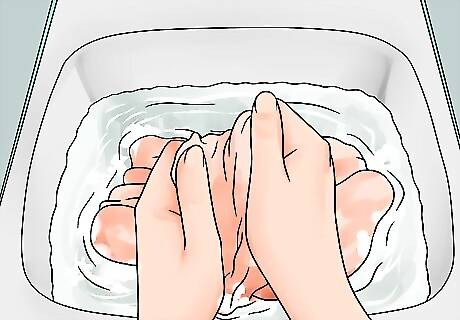
Wash your compression stockings after every use. Hand wash your stockings with laundry soap and warm water. Wring out excess water by rolling your stockings in a towel. Hang them up to dry. Try to get at least two pairs of compression stockings, so you can have one pair to wear while the other is being laundered.
Knowing When to Wear Compression Stockings

Talk to your doctor if you have leg pain or swelling. Leg pain and/or swelling can be uncomfortable to live with, and compression stockings might make your legs feel better. Talk with your doctor to see if this option will reduce your discomfort. If you have poor blood flow in your legs, compression stockings are not the right choice.
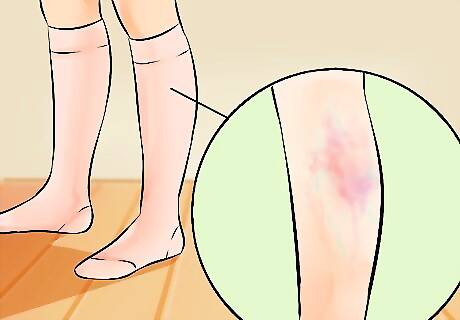
Wear compression stockings if you have reduced blood flow in your legs. Your doctor will check to see if you have varicose veins, a blocked vein, venous leg ulcers, deep vein thrombosis (blood clot in a deep vein), or lymphedema (leg swelling). If one of these conditions is present, your doctor may prescribe compression stockings for you. You may need to wear compression stockings daily for up to two years.
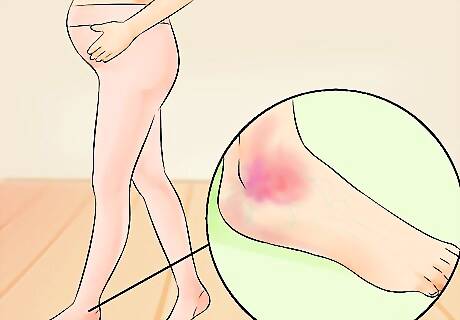
Wear compression stockings if you develop varicose veins while pregnant. Almost one-third of pregnant women will develop varicose veins, which are veins typically in the legs and feet that have enlarged because of increased pressure in your veins. Wearing compression stockings can make your legs more comfortable and will promote blood circulation. Ask your doctor if compression stockings will help your condition.

Wear compression stockings after surgery. In some cases, compression stockings will be prescribed for patients post-surgery to reduce the risk of venous thromboembolism (VTE), or the formation of blood clots in your veins. If your post-surgery recovery restricts your mobility or requires extended bed rest, your doctor may prescribe compression stockings.
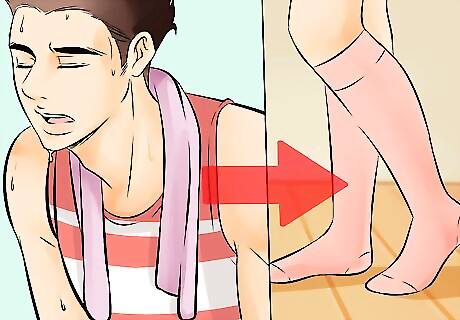
Try compression stockings after exercising. While research about the health benefits of wearing compression stockings during exercise is mixed, recovery time after exercising is decreased as blood flow is improved. Many runners and other athletes now wear compression stockings either during exercise or afterwards. It is up to you whether you find them comfortable enough to wear. These are usually sold as compression socks, and are available at sporting goods stores and other athletic supply stores.
Choosing Compression Stockings
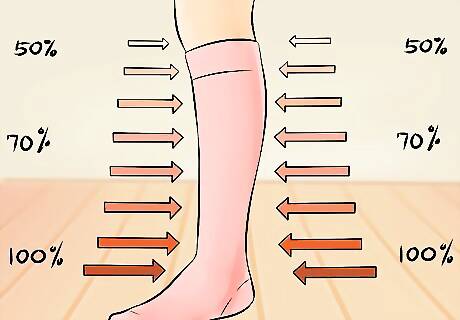
Determine which pressure grade of stockings you need. The compression in the stockings is measured in millimeters of mercury (mm Hg). Your doctor will give you the proper pressure grade of stockings so that you are getting the proper treatment.

Figure out the length of stocking. Compression stockings are available in varying lengths, including knee-high and ones that reach the top of the thigh. Ask your doctor which length you need.
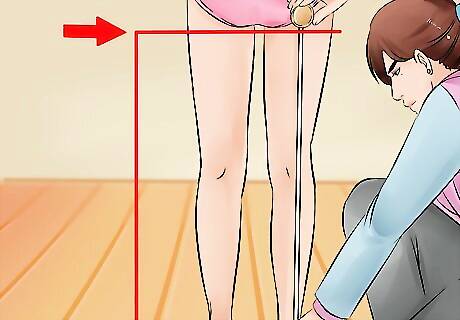
Have your legs measured. Your legs will need to be measured so that you know the proper size of compression stockings to get. Your doctor may measure your legs; if not, a clerk at a medical equipment supply store should be able to help you.

Visit a medical equipment supply store or pharmacy. Locate your local medical equipment shop and verify that they carry compression stockings. Compression stockings are also available through some online retailers. It is preferable to visit a professional to get fitted for the proper compression stockings, but if this is not an option, try shopping online for stockings.

Check with your health insurance. Some health insurance plans will cover compression stockings. You will likely need a doctor’s prescription for these stockings to be covered.




















Comments
0 comment